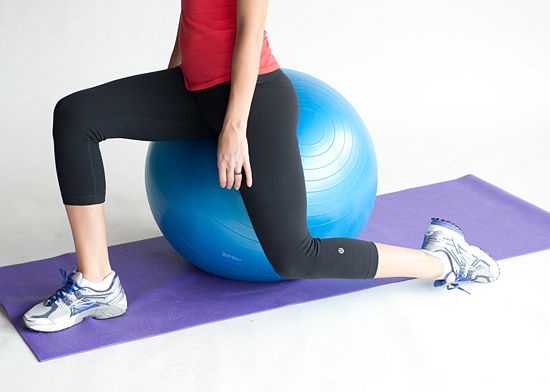Abdominoplasty, or the tummy tuck, stands as a beacon of hope for many striving for a flatter, more toned abdomen that seems unattainable through diet and exercise alone. This surgical procedure is designed to remove excess skin and fat from the abdominal area, resulting in a smoother and firmer abdominal profile. It’s a highly individualized procedure, not a one-size-fits-all solution, meant for those who have not achieved their fitness goals through conventional means. Abdominoplasty is not just about improving physical appearance; it’s about enhancing a person’s self-esteem and comfort in their own skin.
Choosing to undergo abdominoplasty is a significant decision that requires careful consideration and realistic expectations. Ideal candidates are those in good health, at a stable weight, and with a clear understanding that a tummy tuck is not a substitute for weight loss. It’s particularly suited for individuals who have experienced significant weight fluctuations, pregnancy, or aging, which have left them with loose skin or stubborn fat deposits. The journey to abdominoplasty begins with a thorough consultation with a qualified cosmetic surgeon to discuss goals, potential outcomes, and the preparation necessary for a successful surgery and possible need for in-home care during recovery.
Ideal Candidates for Abdominoplasty
Abdominoplasty is best suited for individuals who are in good health and have realistic expectations about the outcomes of the surgery. It’s crucial to understand that a tummy tuck is not a substitute for weight loss or an appropriate exercise program. Instead, it’s recommended for those who are already at or near their ideal weight but struggle with loose skin or excess fat that doesn’t respond to conventional weight loss efforts. People planning significant weight loss or women considering future pregnancies are advised to delay the procedure to maintain the surgery’s benefits.
Preparing for the Procedure
The journey to abdominoplasty begins with selecting a qualified cosmetic surgeon and discussing one’s goals and expectations. During this consultation, the surgeon will evaluate whether the individual is a good candidate for the surgery. Patients who smoke are advised to quit at least two weeks prior to the surgery, as smoking can increase the risk of complications and negatively affect the healing process. This preparation phase is crucial for ensuring a smooth surgical experience and optimal recovery.
Understanding the Types of Abdominoplasty
There are two primary types of abdominoplasty: complete and partial (mini abdominoplasty). A complete abdominoplasty involves an incision from hipbone to hipbone, allowing the surgeon to contour the skin, muscles, and tissue as needed. This procedure may require repositioning the belly button and the placement of drainage tubes under the skin for several days. On the other hand, a mini abdominoplasty targets fat deposits below the navel and typically does not involve moving the belly button. Depending on the specifics of the case, this less invasive option can take about two hours to complete.
The Crucial Role of In-Home Care in Recovery
Recovery from abdominoplasty is a critical phase where in-home care plays a pivotal role. Following the surgery, the treated area is usually stitched and bandaged, requiring careful attention to ensure proper healing. The surgeon will provide detailed instructions on how to care for the wound, manage pain, and gradually resume daily activities. Here are some key aspects of in-home care post-abdominoplasty:
- Pain Management: Adhering to the prescribed pain management plan is essential for a comfortable recovery.
- Wound Care: Keeping the surgical site clean and dry is crucial to prevent infection and promote healing.
- Activity Restrictions: Patients are advised to avoid strenuous activities and heavy lifting for about six weeks post-surgery. This rest period is vital for allowing the body to heal properly.
- Support System: Having a support system in place can significantly ease the recovery process. Family members or caregivers can assist with daily tasks, ensuring the patient can focus on healing.
Nurturing Recovery: The Role of In-Home Care Post-Abdominoplasty
Recovery from abdominoplasty is a journey that extends well beyond the surgical suite, with in-home care playing a crucial role in ensuring a smooth and effective healing process. Following the procedure, patients will find themselves navigating through a recovery period that involves managing discomfort, caring for the surgical site, and gradually reintroducing daily activities under the guidance of their surgeon. This period is critical for achieving the best possible outcomes and requires a dedicated approach to pain management, wound care, and activity restrictions. Patients are advised to lean on their support system during this time, as assistance with daily tasks can significantly impact the ease and effectiveness of the recovery process.
The transformative journey of abdominoplasty culminates in a renewed sense of confidence and well-being for those who undergo the procedure. It’s a testament to the power of cosmetic surgery to not only alter physical appearances but also to positively affect individuals’ lives. With diligent preparation, expert surgical care, and comprehensive post-operative support, patients can look forward to achieving their desired aesthetic goals and embracing a new chapter in their lives. Abdominoplasty is more than a cosmetic procedure; it’s a step towards reclaiming one’s body and self-image, offering a path to renewed self-assurance and satisfaction with one’s physical appearance.




